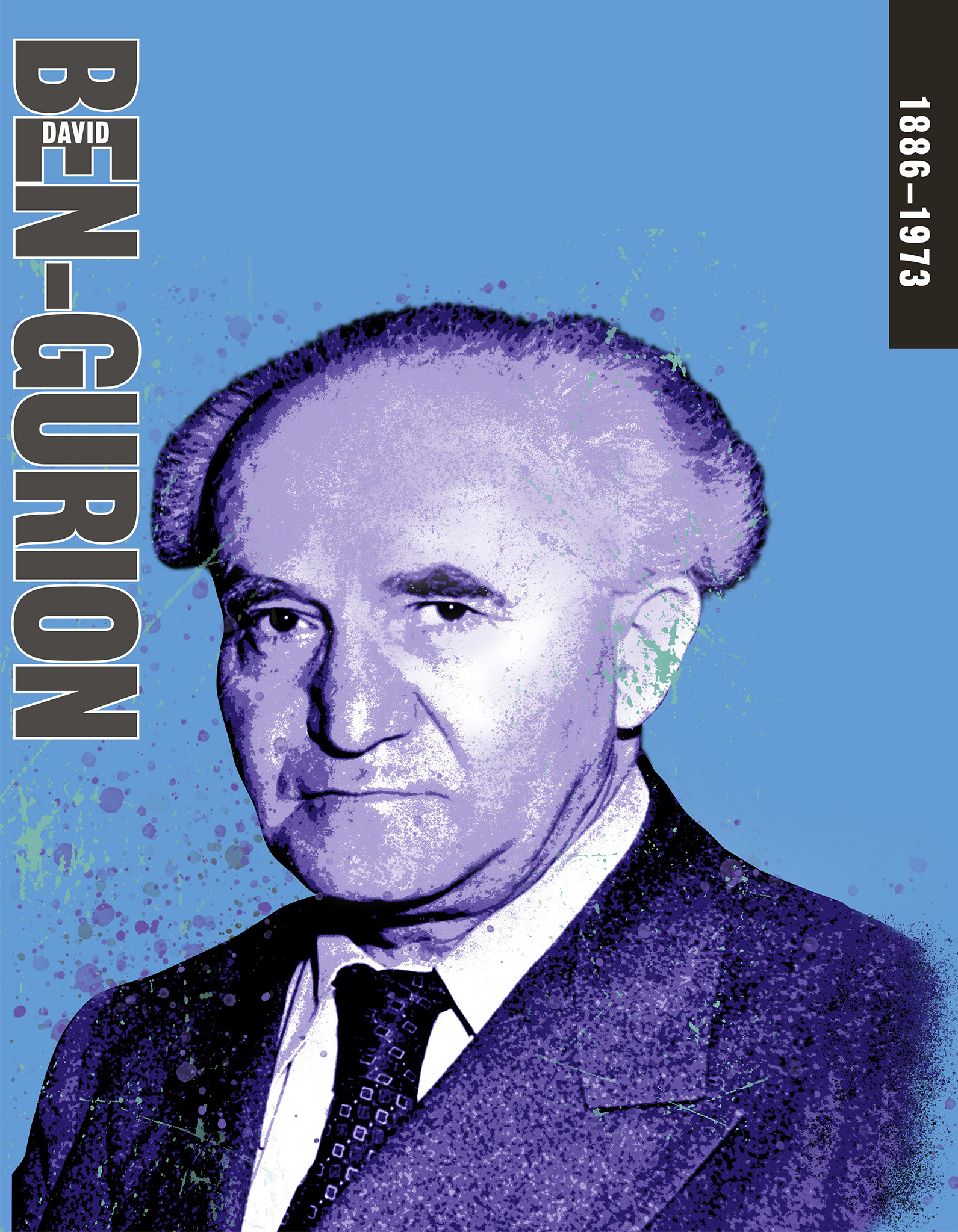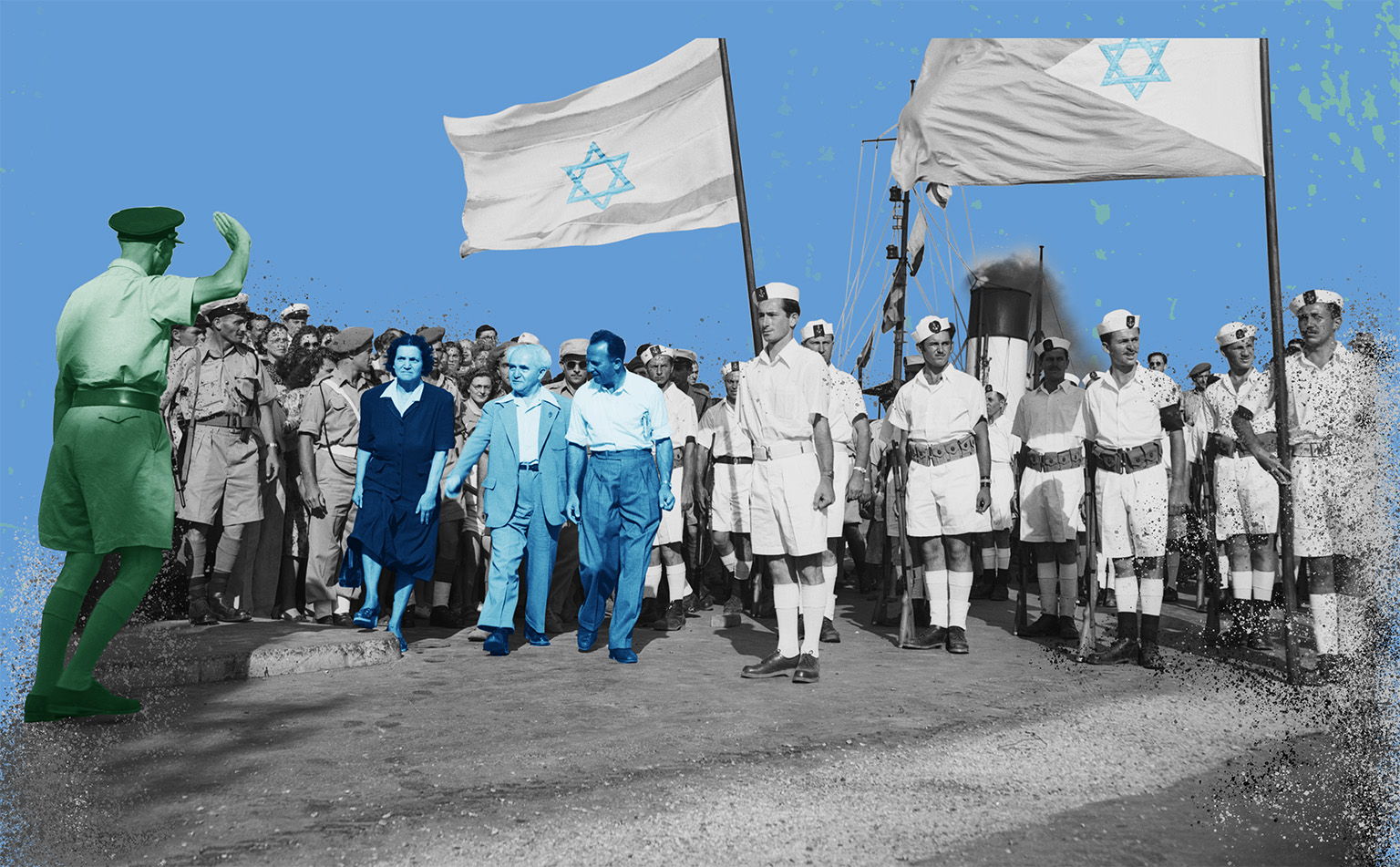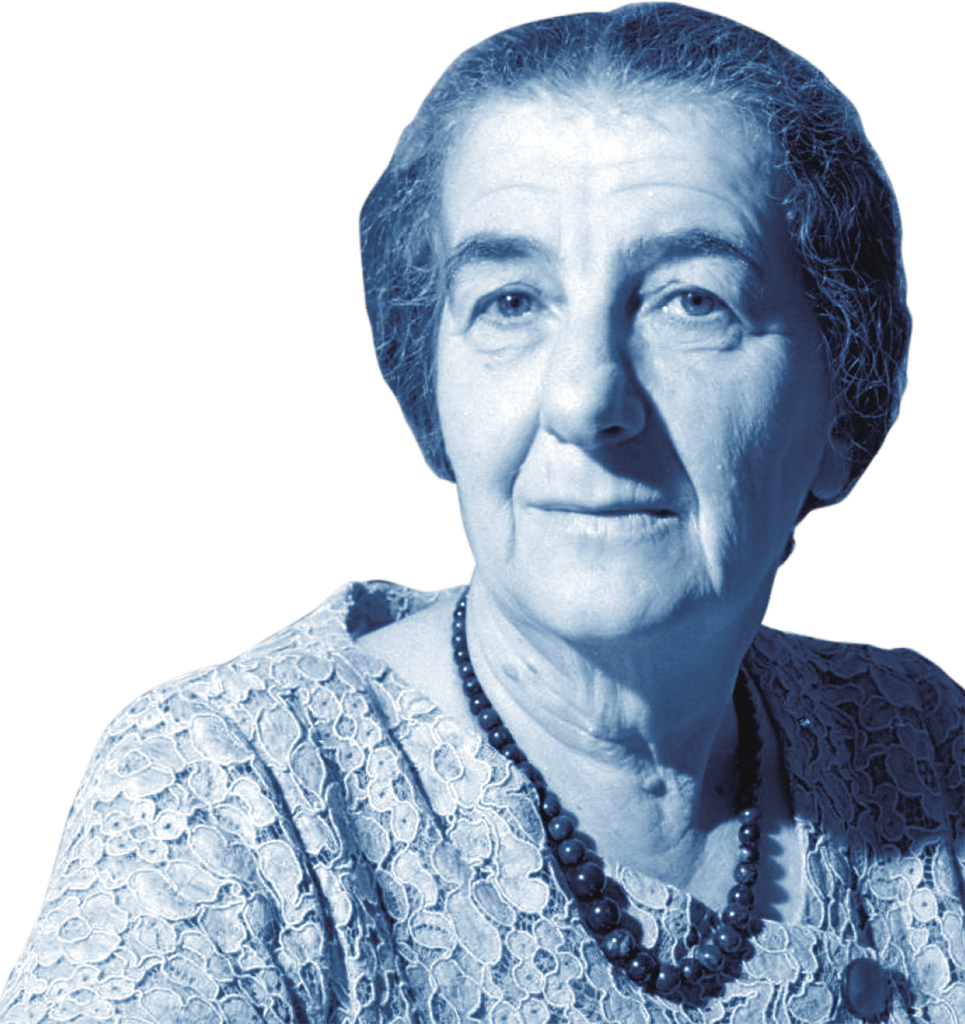
David Ben-Gurion
1886–1973
Widely regarded as the “Father of Israel,” David Ben-Gurion had been involved in the campaign for a homeland for the Jews of Europe since he was a teenager. As Israel’s first-ever prime minister, he was instrumental in developing the Jewish settlements in Palestine into a modern, prosperous nation.
David Gruen was born in Płońsk, Poland, then part of the Russian Empire, on 16 October 1886. His mother died when he was 11, and he was raised by his father, Avigdor Gruen, a lawyer and a leader in the Hibbat Zion (Lovers of Zion) movement that arose as a reaction to attacks on Jews in Russia during the 1880s. Hibbat Zion laid the foundations for modern Zionism, which sought to find a way for the Jewish people to return to Palestine, a region in the Middle East they regarded as their homeland.
The move toward Palestine
In 1903, Jewish residents of the Russian city of Kishinev were attacked by fellow citizens following a rumor that they had murdered a Christian child for sacrificial purposes. The pogrom (government-sanctioned violence) that followed added to the Jews’ sense of urgency in creating a true, safe Jewish homeland. Convinced that the future of Judaism lay in Palestine, Gruen emigrated there in 1906, joining the 60,000 Jews who had already settled there. While working on farms, he immersed himself in the Marxist ideology of the Jewish Social Democratic Party. He also changed his name to “Ben-Gurion”, after Yosef ben Gurion, a 1st century Jewish leader. When World War I broke out, Ben-Gurion was deported by the German-backed Ottoman Empire that controlled Palestine. He traveled to New York, where he built an American chapter of the left-wing Labor Zionism movement, and met and married Paula Munweis.
Early signs of a divided Palestine
In 1917, the British government issued the Balfour Declaration, stating its support for the creation of a Jewish state in Palestine, which inspired Ben-Gurion to return and fight alongside the British forces. Three years later, Britain took responsibility for Palestine under a postwar mandate issued by the League of Nations and assisted the immigration (aliyah) of 40,000 Jews. However, the local Arabs rioted at the influx, prompting the Jews, led by Ben-Gurion, to form their own militia—later becoming the basis of Israel Defense Forces (IDF).
As leader of Labor Zionism, and chairman of the Zionist and Jewish Agency Executives, Ben-Gurion entered discussions with Britain over a proposed division of Palestine, where by 1939, there were some 450,000 Jewish settlers, about a third of their population. Britain then decided to limit immigration to Palestine for fear of antagonizing Egypt and the oil-rich Arab states.
In 1942, Ben-Gurion called on Jews to rise up in an armed struggle against the British, instigating a period of violence between British forces and the Jews in Palestine. The United Nations (UN) intervened in 1947, recommending a partition of Palestine into Arab and Jewish states. Welcomed by the Jews, this was flatly rejected by the Arabs.
The birth of a homeland
Israel was established in 1948 with the support of the UN, the US, and the USSR. The British withdrew, and the Arab–Israeli War erupted within months. Ben-Gurion formed the IDF, which quelled the conflict, and an uneasy truce prevailed.
In 1949, Ben-Gurion’s Mapai (Labour)party won Israel’s first general election, and he became both prime minister and minister of defense. Serving until 1963, he oversaw the construction of the new country and its transformation from simple farming settlements into today’s nation of 9 million people.

“In Israel, in order to be a realist you must believe in miracles.”
David Ben-Gurion, 1956

As Israel’s new prime minister, Ben-Gurion and his wife (center left) were at the Haifa docks on April 7, 1948, to see the last British troops leave the Holy Land.

Israel’s population grew quickly. While Ben-Gurion was prime minister (1948–63), more than a million Jews emmigrated, (made aliyah) to the state.
GOLDA MEIR

Born in Russia, Golda Meir survived a pogrom in Kiev in 1905 and became a leading figure in the creation of Israel.
At school, Golda became involved in the Zionist youth movement and, after graduating, went on to obtain a teaching qualification. In 1917, she married Morris Meyerson, a painter, and moved to Palestine in 1921 to live on a kibbutz (farming community). During and after World War II, she helped Jewish refugees and lobbied the British government to lift the restrictions on immigration to Palestine. She cosigned Israel’s declaration of independence and held several government roles under Ben-Gurion.
MILESTONES
zionist activist
Founds Labor Zionism group in New York, 1915, and seeks volunteers to fight in Palestine.
supports the Allies
Joins Jewish Legion, five battalions of Jewish volunteers who help fight the Ottomans, 1918.
jewish leader
Becomes chairman of Jewish Agency for Israel, 1935; leader of the Jews now living in Palestine.
Leader of israel
Israel founded, May 14 1948, becomes its first prime minister. Resigns, 1953; re-elected, 1955.
Israel fights back
Sends troops to fight in Egypt after its president, Gamal Nasser, nationalizes Suez Canal, 1956.
